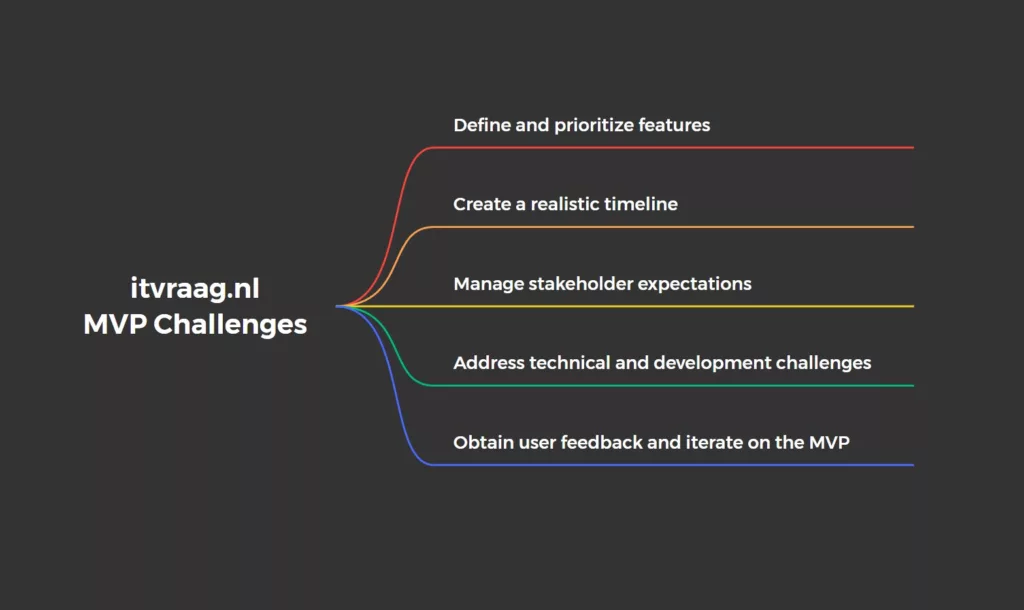TLDR; Implementing an MVP in project management is challenging. You must prioritize features, create a realistic timeline, manage stakeholders’ expectations, address technical hurdles, and iterate based on user feedback. To succeed, use techniques like user stories, agile methodologies, and technical spikes. Involve stakeholders in the development process, gather feedback, and use code reviews, automated testing, and continuous integration. Finally, obtaining user feedback and iterating is crucial to improving the MVP.
MVP Intro
In today’s fast-paced world, project management plays a crucial role in ensuring the success of any IT project. One of the key aspects of project management is developing an MVP (Minimum Viable Product). An MVP is a strategy where a product with minimal features is launched first, allowing teams to gather feedback from users and make improvements.
However, implementing MVP can present several challenges. In this blog post, we will discuss the most common challenges in implementing MVP in project management, and provide practical solutions to overcome them.
Defining and Prioritizing MVP Features
- Define and prioritize the most important features for MVP
- Use user stories, user feedback, and market research to identify essential features
- Prioritize essential features using techniques such as MoSCoW method, Kano model, or impact/effort analysis
Creating a Realistic MVP Timeline
- Creating a realistic timeline for MVP implementation
- Estimating time required to develop each feature
- Using estimation techniques such as bottom-up estimation, expert judgment, and historical data analysis for accurate estimates
- Using agile methodologies such as Scrum or Kanban to manage the development process
- Ensuring that the MVP is delivered on time and within budget
Managing Stakeholder Expectations
- Communicate MVP concept and limitations to stakeholders
- Provide clear and concise information about the MVP to stakeholders
- Explain the purpose of the MVP, the features that will be included, and the limitations of the MVP to stakeholders
- Involve stakeholders in the development process
- Gather feedback from stakeholders
Addressing Technical and Development Challenges
- Ensure MVP is technically feasible and scalable.
- Use proof-of-concept, prototyping, and technical spikes to identify and address technical challenges.
- Use code reviews, automated testing, and continuous integration to ensure that the quality of the MVP is not compromised.
Obtaining User Feedback and Iterating on the MVP
- Obtain user feedback
- Use techniques such as surveys, user interviews, and usability testing to obtain user feedback
- Use analytics tools to track user behavior and gather insights
- Gather both positive and negative feedback
- Iterate on the MVP based on user feedback and technical constraints
- Use techniques such as A/B testing, feature flags, and continuous delivery to iterate on the MVP while minimizing the risk of introducing new features




